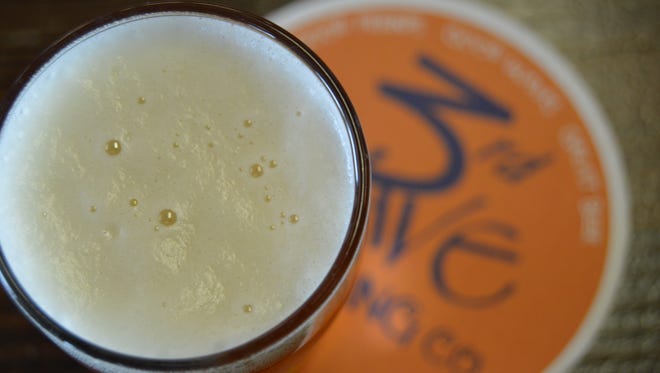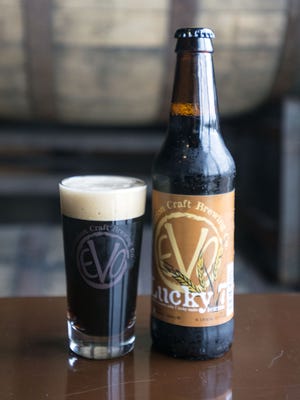Russo: If you want to pair, let the beer choose the menu

Possibly the biggest change in the larger craft beer culture in the last 30 years has been the notion of pairing food with beer.
It isn’t that it’s a new thing. On the contrary, when craft beer had its earliest breakthroughs in the 1990s, it was fueled by the picture of beer as a foodie’s choice of beverage.
People started to see craft beer as a wine-like meal complement without the pretense. It could (and still can) improve a meal considerably, but regular diners didn’t have to rely on a sommelier to make that happen.
Instead, all they had to do was take the time to notice that craft beer had complex flavors and let those flavors inform her overall experience.
In fact, it was craft beer’s wild success as a fine dining alternative that spurred the wine industry into a new “accessibility” phase. The idea of just finding a wine you like, regardless of color or what “the man” said was appropriate to the beef, chicken or fish you planned on eating changed the vintners practice and approach by the first decade of the 21st century.
Now, it feels as if there’s a vague pressure to know just the right beer, rather than wine, to have with dinner. Craft beer pairings are where wine pairings were in the 1980s. Better restaurants have a Cicerone (essentially a beer sommelier) and the places that really care about beer offer pairings on their menu.
To be clear, this is an awesome development for people who love craft beer. It also makes a ton of sense for restaurants that want to be helpful for people who want to pair their beer with their dinner but don’t know how.
If there’s any downside at all, it is the specter of pretense that can come along with things like food pairings and professional beer suggesters. But for people who are interested in trying to let their craft beer choice help improve their meal experience, it’s important to remember that the central thing about craft beer, what separates it from all other would-be pairing choices, is accessibility.
Once you recognize that craft beer has its own flavors and that those flavors can help to improve the dining experience, you are further along than you even know. The real complexity comes with the depth of diversity you’ll find on even a regular craft beer menu.

For example, “IPA” has become a beer style that is as descriptive as “white wine” or “whiskey.” Just as there is a chasm between, say, Sauvignon Blanc and Moscato, there can be significant differences between IPAs. Similarly, words like hoppy, fruity, bitter and malty have a lot of different meanings to a lot of different people.
The most important thing you need to know about starting to pair beers with your meal is to give them a second before drinking them. Ice cold beer is an American myth that comes from a beer culture that, generally, wasn’t making beer with flavor.
Cold is an enemy of full flavor. Frosty mugs and low temperatures disguise mediocre tastes. I’m not suggesting to let your beer get warm, but especially at this time of year when brown and black beers are really prevalent, let the beer you’re served come down a few before you drink it.
After that, choosing a beer is as much about what you like as what you’re eating.
So, baseline: If you want to start to let your beer improve your meal, start with what you like to drink and work outward. Despite what you may have been led to believe, when you’re getting started in pairing foods with beers, it’s easiest when you pick a beer you already like to drink and find a food that complements the beer.
In that way, pairing is a lot like those “magic eye” pictures that were so popular. No one could tell you how to see them, but once you figured it out on your own, it was a piece of cake. The next time you have a beer, just ask yourself what you like about its flavor. If you order something that goes well with it, you’ll get the “trick” and from there, the world is your oyster.
Navigating IPAs

The shortest version is that based on how bitter or hoppy you like an IPA, order something proportionately spicy. Tried and true favorites, like Dogfish Head’s 60 Minute or Evolution’s Lot 3 are going to improve things like wings, Chinese and Indian food in ways that have to be experienced to be believed.
For every fruitiness that you like, (grapefruit, pineapple, blood orange, etc.) add a greater element of barbecue. The fruit takes the zing of a spicy-fruity sauce to new levels. But, to be honest, if the beer is anywhere in the “yellow-to-golden” spectrum, it’s going to complement spicy foods.
Wheat beers
If wheat beers are your thing, notice the citrus aspect the next time you have one. Try it with a broiled fish or a greens-heavy dish or even a salad (bonus points for a Caesar salad). It will cut the salt in a really refreshing way and bolster any fruits.
Stouts and porters
If these are your favorite beers, it’s because of the chocolate or coffee smokiness (or, maybe just the relief from bitterness). So if it is charred on a grill, there’s going to be some complements there.But if you’re interested in a counterpoint, letting the smokiness come from the beer to bolster the lack of smokiness in your food, try it with any hardy soup (tomato is a personal favorite).

Belgians
In general terms, there is not one dessert that can’t be improved by a sweet/spicy alcohol-heavy Belgian beer. But it isn’t an exclusively dessert beer. It’s awesome with fried things, especially when the primary flavor is fried, because it complements the thickness while adding flavor where it often can be missing.
Trade your pilsner or lager out for a Belgian with fish and chips. for example, and everything will work out fine.
Beer flavored beer
Speaking of which, pilsners, lagers and pale ales are on the rise among craft breweries. So, if you’ve been afraid of craft beer, these are the ones to try.
As I mentioned earlier, these don’t taste super gross if they aren’t brain-freezingly cold and are awesome “corporate beer” substitutes for everything from burgers to Mexican food.
There are tons of opinions and resources on the internet that will tell you either the exact same things or the complete opposite, but finding your own ways and preferences is the most satisfying way to learn to pair beers.
Cheese is a whole separate issue, but follows the same general principles, think of the beer, then of the cheese and you’ll be fine. There is no cheese on this planet that is not improved by one beer or another. The most important thing to remember is drink what you like and be happy.